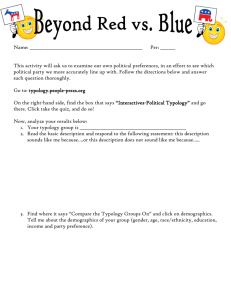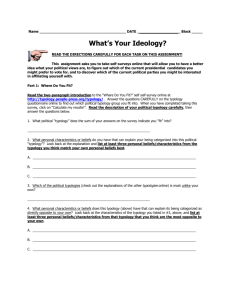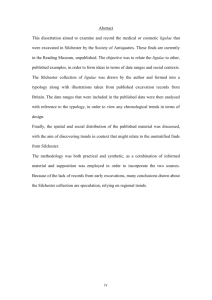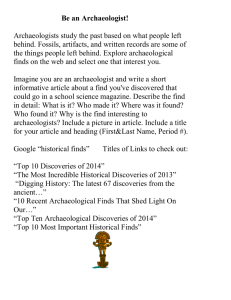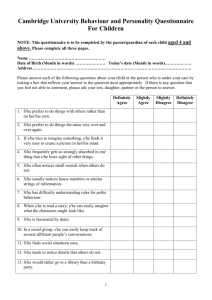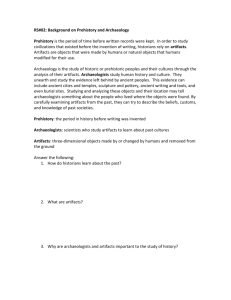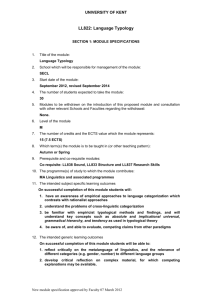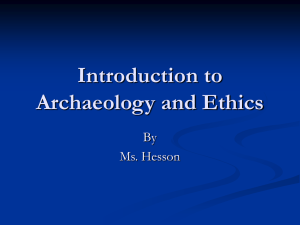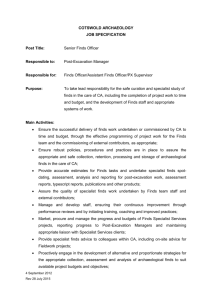to document. - Society for American Archaeology
advertisement
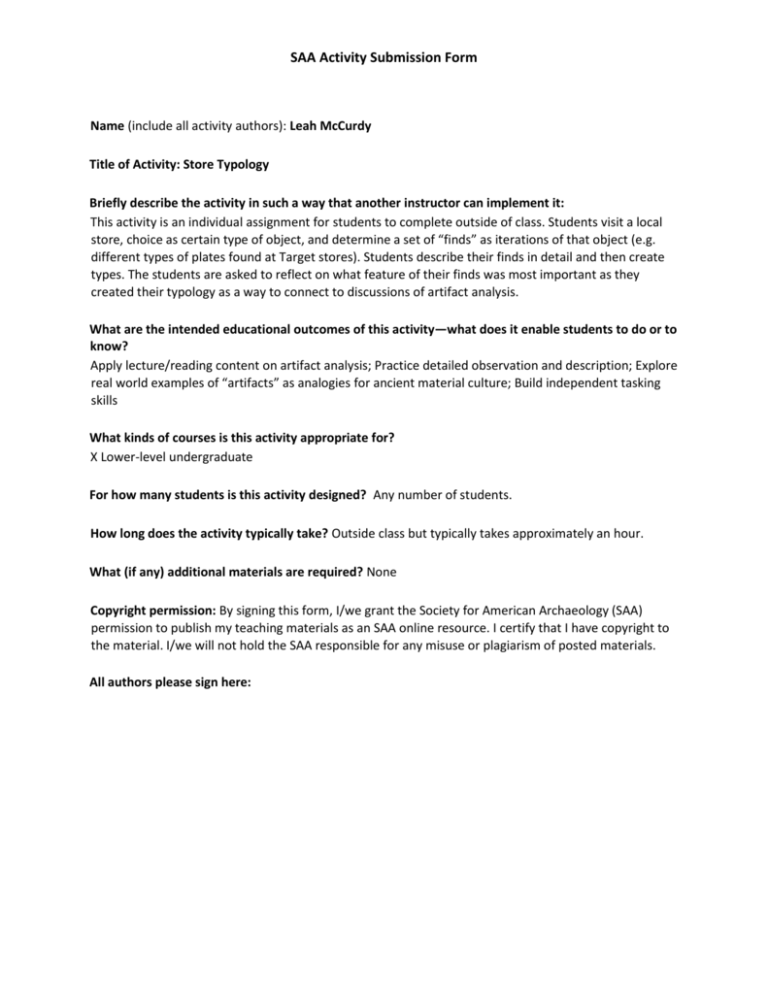
SAA Activity Submission Form Name (include all activity authors): Leah McCurdy Title of Activity: Store Typology Briefly describe the activity in such a way that another instructor can implement it: This activity is an individual assignment for students to complete outside of class. Students visit a local store, choice as certain type of object, and determine a set of “finds” as iterations of that object (e.g. different types of plates found at Target stores). Students describe their finds in detail and then create types. The students are asked to reflect on what feature of their finds was most important as they created their typology as a way to connect to discussions of artifact analysis. What are the intended educational outcomes of this activity—what does it enable students to do or to know? Apply lecture/reading content on artifact analysis; Practice detailed observation and description; Explore real world examples of “artifacts” as analogies for ancient material culture; Build independent tasking skills What kinds of courses is this activity appropriate for? X Lower-level undergraduate For how many students is this activity designed? Any number of students. How long does the activity typically take? Outside class but typically takes approximately an hour. What (if any) additional materials are required? None Copyright permission: By signing this form, I/we grant the Society for American Archaeology (SAA) permission to publish my teaching materials as an SAA online resource. I certify that I have copyright to the material. I/we will not hold the SAA responsible for any misuse or plagiarism of posted materials. All authors please sign here: STORE TYPOLOGY “Typology, the simple act of grouping artifacts by the 19th century maxim, ‘like goes with like,’ provides archaeologists with an effective method of grouping, analyzing, and dating their finds. To begin a typological analysis, the archaeologist first groups their finds by type. This could mean shape, color, decoration, or any other quality of the artifacts. With the artifacts grouped together, the groups can then be sequenced again by placing the similar groups closer together” (The Joukowsky Institute for Archaeology n.d.). To better understand the process of typology, you will be creating a typology of objects found at the store of your choice. You will observe these “finds” for similarities and differences. This typology will help you analyze this “assemblage of finds” and practice this fundamental step in artifact analysis. Follow the instructions below. NO PURCHASE NECESSARY!! You do not need to buy any of your “finds.” 1. Locate at least ten examples (“finds”) of an object at a single store (ex. 10 different porcelain plates with different decoration or shapes on the shelves at Target). Take a photo of yourself with your favorite find and upload it to Blackboard in the STORE TYPOLOGY section on the left-hand menu before class on Monday, October 5. What type of object did you choose (e.g. plates)? ___________________________________________________ 2. Before you start grouping, give each example a letter. Write a brief description of each example using the spaces below. Make sure to highlight distinct features of each example. a. _________________________________________________________________________________________ _ b. _________________________________________________________________________________________ c. _________________________________________________________________________________________ _ d. _________________________________________________________________________________________ e. _________________________________________________________________________________________ f. _________________________________________________________________________________________ _ g. _________________________________________________________________________________________ _ h. _________________________________________________________________________________________ i. _________________________________________________________________________________________ _ j. _________________________________________________________________________________________ _ 3. Group the examples based on their similarities. Everyone will have a different number of groups because all finds will be different. You may have a little as 3 or as many as 9 groups. It depends on your assemblage. These groups are your TYPES. Name your types and write down which examples (based on letters assigned before) belong to each type. Use as many spaces as required. TYPE NAME: _____________________________________________________________________________________ Examples Included in this type: ________________________________________________________________ TYPE NAME: _____________________________________________________________________________________ Examples Included in this type: ________________________________________________________________ TYPE NAME: _____________________________________________________________________________________ Examples Included in this type: ________________________________________________________________ TYPE NAME: _____________________________________________________________________________________ Examples Included in this type: ________________________________________________________________ TYPE NAME: _____________________________________________________________________________________ Examples Included in this type: ________________________________________________________________ TYPE NAME: _____________________________________________________________________________________ Examples Included in this type: ________________________________________________________________ TYPE NAME: _____________________________________________________________________________________ Examples Included in this type: ________________________________________________________________ TYPE NAME: _____________________________________________________________________________________ Examples Included in this type: ________________________________________________________________ TYPE NAME: _____________________________________________________________________________________ Examples Included in this type: ________________________________________________________________ 4. Determine which characteristic of each example was the most important in your typology. What feature or aspect of the objects did you pay attention to most while forming these types? Write a couple (formal and academic) sentences to explain. Use the categories of artifact analysis we discussed in class as a guide to address this question.
